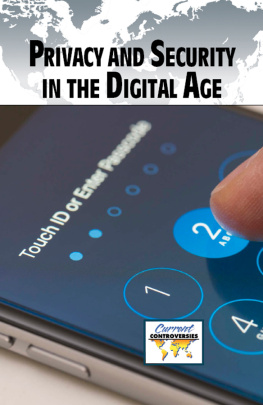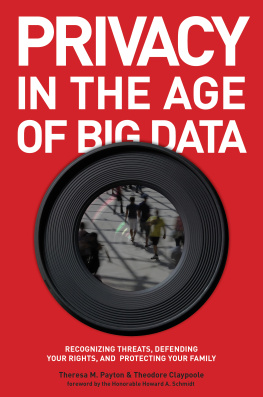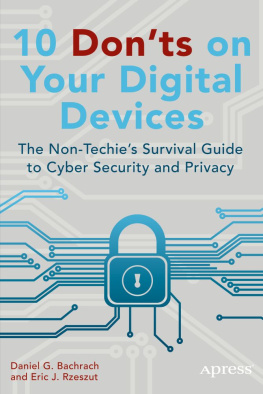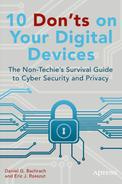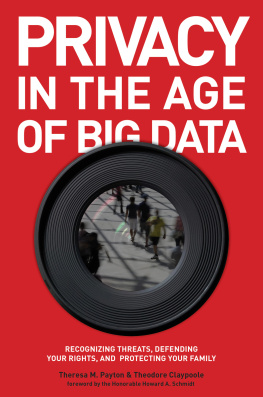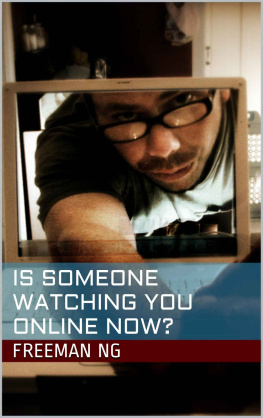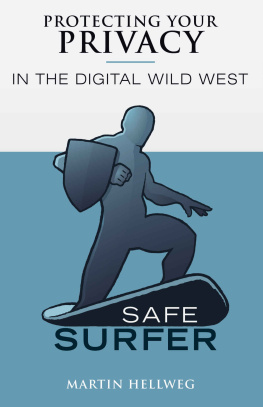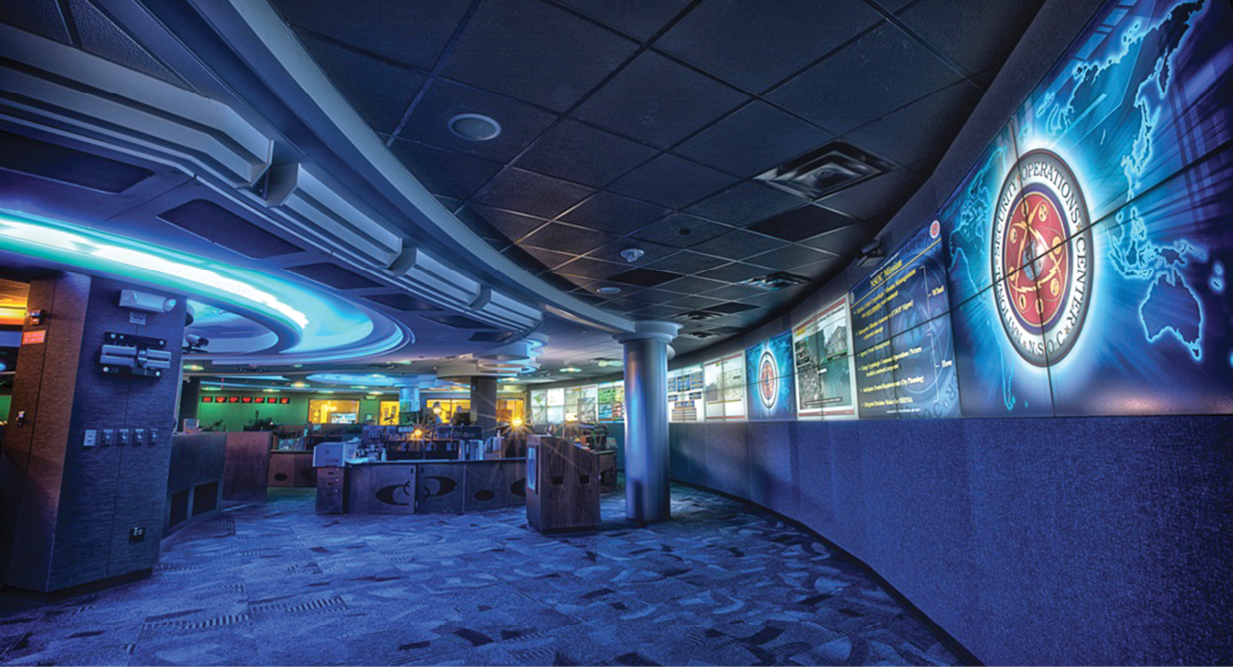To all seven of my grandchildren, from toddler to middle schoolers: Jamie, Jackson, Lael, Judah, Hayley, Alethia, and Collin. I write these books for you.
Text copyright 2021 by Lerner Publishing Group, Inc.
All rights reserved. International copyright secured. No part of this book may be reproduced, stored in a retrieval system, or transmitted in any form or by any meanselectronic, mechanical, photocopying, recording, or otherwisewithout the prior written permission of Lerner Publishing Group, Inc., except for the inclusion of brief quotations in an acknowledged review .
Twenty-First Century Books
An imprint of Lerner Publishing Group, Inc.
241 First Avenue North
Minneapolis, MN 55401 USA
For reading levels and more information, look up this title at www.lernerbooks.com .
Main body text set in Tw Cen Classified MT Std.
Typeface provided by Agfa.
Library of Congress Cataloging-in-Publication Data
Names: Miller, Michael, 1958 author.
Title: Cyberspie s : inside the world of hacking, online privacy, and cyberterrorism / Michael Miller.
Description: Minneapolis, M N : Twenty-First Century Books, [2021 ] | Includes bibliographical references and index . | Audience: Ages: 111 8 | Audience: Grades: 7 9 | Summary: As the digital world grows, teens must be aware of threats to their online privacy and security. This book details forms of cyberspying, explores careers in cyberintelligence, and looks at various online threats Provided by publisher.
Identifiers: LCCN 2020022338 (print ) | LCCN 2020022339 (ebook ) | ISBN 781728413907 (library binding ) | ISBN 781728419091 (ebook)
Subjects: LCSH: Cyber intelligence (Computer security)Juvenile literature.
Classification: LCC QA76.9.A25 M582 2021 (print ) | LCC QA76.9.A25 (ebook ) | DDC 005.8dc23
LC record available at https://lccn.loc.gov/2020022338
LC ebook record available at https://lccn.loc.gov/2020022339
Manufactured in the United States of America
1-48543-49043-10/2/2020
Table of Contents
Chapter 1
Spies like Us: Inside the World of Cyberintelligence
Chapter 2
Cybersleuthing: Searching for Information (Legally)
Chapter 3
Cyberespionage: Obtaining Secret Information
Chapter 4
Cyberpolitics: Hacking the Vote
Chapter 5
Cyberpropaganda: Spreading Fake News
Chapter 6
Cyberattacks: Ransomware and More
Chapter 7
Cyberterrorism: Attacking Systems and Infrastructure
Chapter 8
Cyberwarfare: Nation versus Nation, Online
Chapter 9
Cybersecurity: Playing Defense
Chapter 10
Want to Be a Cyberspy?
Chapter 1
Spies like Us:
Inside the World of Cyberintelligence
The National Security Operations Center and other National Security Agency branches monitor threats to the United States. Many of those threats come via cyberspace.
L oren Sands-Ramshaw has always loved technology. Born in 1988, he grew up in the Washington, DC, area, the heart of the US government. Like many kids of his generation, he played video games for fun and used computers to connect with friends and do schoolwork. When he was eleven, the Washington Post included him in an article about tween buying habits. He told the reporter about his dream bedroom: I would love my own computer, a TV, and a Nintendo 64 in my room. And a soft armchair to read in.
In high school at Sidwell Friends School in Bethesda, Maryland, Sands-Ramshaw loved math and science. He was a member of Sidwells mathematics team, which competed against teams from other high schools to solve difficult math problems. After high school he attended Dartmouth College in Hanover, New Hampshire. He graduated magna cum laude (with great distinction) with a bachelors degree in computer science. His honors thesis was about how terrorists might use the internet to attack the US power gridthe network of wires and equipment used to transmit electricity and other kinds of power across the nation.
After graduation, he was offered a job by the National Security Agency (NSA), part of the US Department of Defense (DOD). The NSA monitors, collects, and processes intelligence, or information about potential threats to the United States, from around the globe. Its a spy agency, and it wanted Sands-Ramshaw to join its team of US government cyberspies.
The NSA often works online. Its agents frequently hack computers, smartphones, and online networks to gather data. Sands-Ramshaws background in math and computers made him an ideal candidate for the agency, which wanted to expand its base of tech-savvy employees. The agency was especially interested in people with a knowledge of malware (malicious software, including computer viruses), cryptography (breaking secret codes), and computer network security (defending networks from online attacks). Sands-Ramshaw easily met these requirements.
I was a spy for the US government, he said about his new job. But he quickly discovered that NSA employees arent spies in the way the fictional James Bond is a spy. They dont go on missions in enemy territory, they dont carry weapons and fancy spy gadgets, and theyre never in physical danger. Instead, the agencys cyberspies work behind the scenes in a safe environment. They sit in front of computers, gathering and analyzing electronic intelligence from the internet. Working as an NSA spy is a desk job.

Fictional spies such as James Bond use guns and other deadly weapons. Cyberspies, on the other hand, usually work in offices. Their tools are computers.
Many fictional spies operate outside the law. They lie, steal secret information, and double-cross enemy agents. But Sands-Ramshaw described his NSA coworkers as law-abiding type[s]. They had to be, since all potential NSA employees go through rigid background checks, psychological screening, and polygraph (lie detector) tests. During the background check, an NSA agent calls all the personal and professional references a job candidate has listed and even walks around the job candidates neighborhood or school and asks people about them. The psychological screening is designed to identify troubling personality traits, such as a tendency to lie or cheat. During the polygraph test, job applicants answer questions designed to determine if they are law-abiding and patriotic. One question is, Have you ever given classified [secret government] information to a foreign entity?
And all NSA job candidates have to fill out the governments Standard Form 86. This 127-page questionnaire asks applicants about their schooling; where they have lived, worked, and traveled; foreigners theyve worked with or been friends with; and other life history. Then staffers with the agency verify that each answer to each question is true.
The application process is long and involved, but its effective in weeding out unqualified and unsuitable job candidates. It is highly unlikely that any foreign spies or people with criminal backgrounds would make it past the screening.
Sands-Ramshaw said he was impressed not only by [his fellow NSA employees] technical ability, but also by their dedication to the mission. They are the most earnest and conscientious group of people I have ever met.

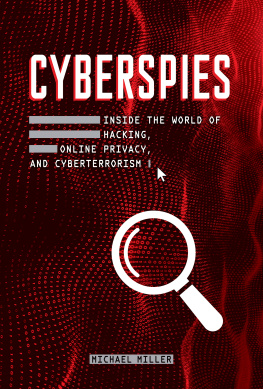





![Michael Miller - Idiots Guides: Music Theory, Third Edition [Book]](/uploads/posts/book/161692/thumbs/michael-miller-idiot-s-guides-music-theory.jpg)

